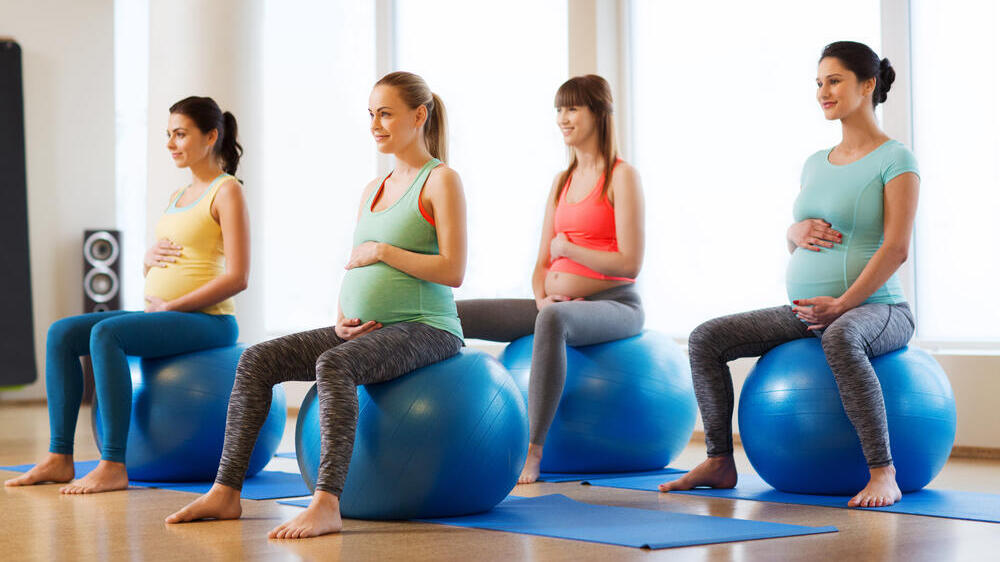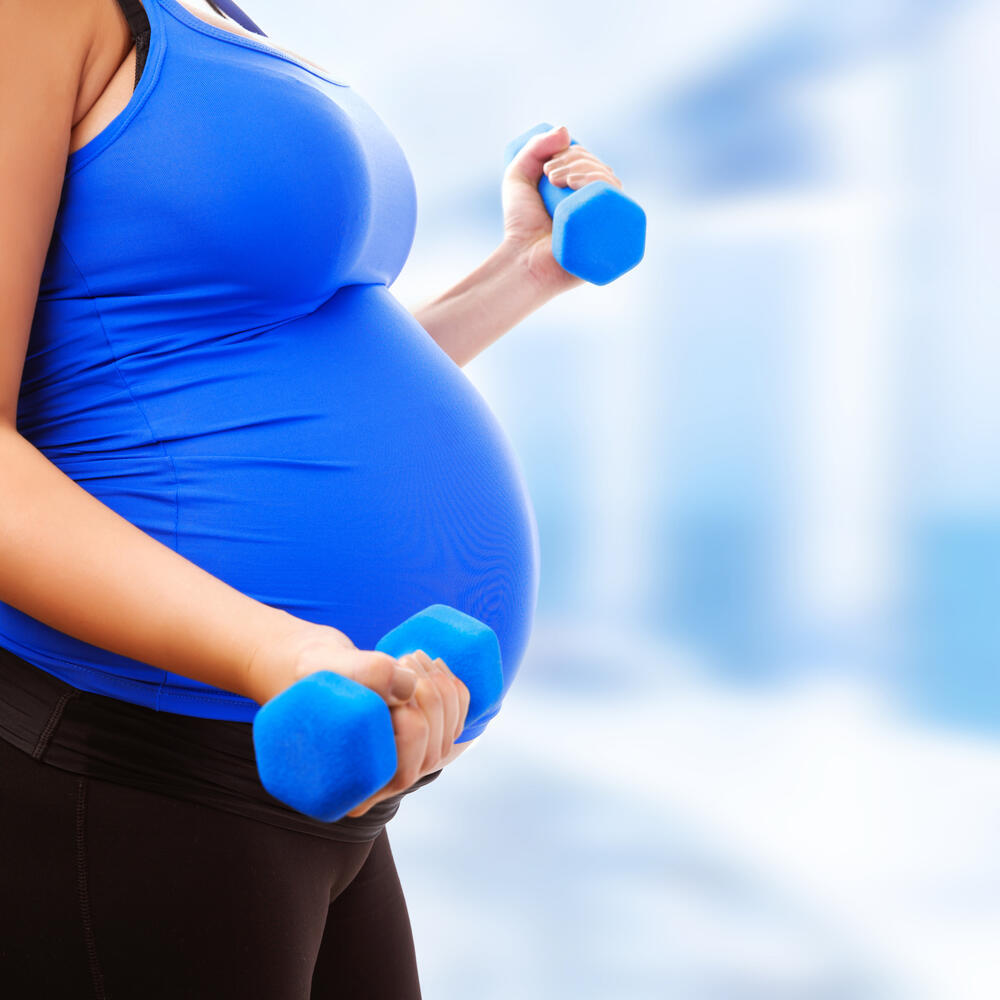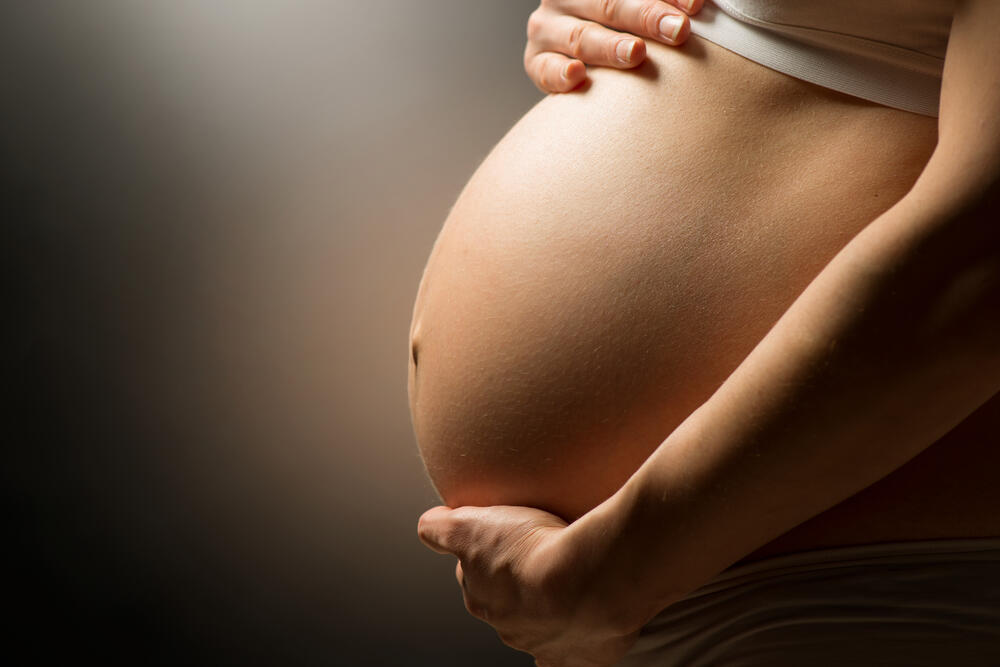Staying physically active is crucial for maintaining good health, even during pregnancy. Regular physical activity helps to decrease the likelihood of developing obesity, diabetes, heart disease, and even cancer. It also reduces symptoms of depression, improves the quality of life, and may extend lifespan.
Related stories:
With the importance of maintaining an active lifestyle during and after pregnancy in mind, the Israel Medical Association's "Medicine" journal published a list of recommendations for expecting mothers on how to stay physically fit.
Strengthening muscles can reduce back pain
The authors note that during pregnancy, the woman's body undergoes numerous changes, including increased blood volume, heart rate, and heart output. These changes create a reserve in the cardiovascular and heart system that supports the mother and fetus during both rest and exercise.
In the 20th week of pregnancy, there is a decrease in blood flow back to the heart when lying on the back due to pressure from the uterus on the inferior vena cava, which carries blood to the heart. As lung capacity also changes, the ability to perform aerobic activity decreases and the availability of oxygen during strenuous aerobic activity decreases.
Women who are pregnant should increase their fluid intake, wear lightweight clothing, avoid activities in hot and humid weather, especially in the first trimester of pregnancy. Exposure to heat in a Jacuzzi or sauna has been linked to neural tube defects in the developing fetus, but physical activity itself is not expected to raise the body temperature to a worrying level and is therefore recommended and important.
Strengthening activities of the abdominal and back muscles, for example, may reduce the risk of back pain. During pregnancy, the woman's weight distribution changes, as does the angle of the spine, resulting in approximately 60% of women experiencing lower back pain during pregnancy.
The increased hormone levels cause relaxation of the ligaments in the skeletal and muscular system, resulting in a change in the range of motion and a risk of injury to the joints, so it is recommended to start physical training with warm-up and end it with relaxation.
Physical activity during pregnancy also affects the developing fetus: the fetal heart rate responds with an increase of 10-30 beats per minute above the baseline during or after activity. However, there is no risk of harm to the fetus.
Strengthening the pelvic floor
According to new recommendations, it is suggested that every pregnant woman engages in physical activity unless there is a contraindication from their gynecologist.
The recommendation is for at least 150 minutes of moderate-intensity physical activity per week, spread over at least three days - preferably over the entire week.
Even physical activity that lasts less than 150 minutes has been found to be beneficial. There is not enough information about high-intensity or prolonged physical activity.
The recommendation for physical activity applies to pregnant women who have not engaged in such activity before pregnancy, as well as to women with gestational diabetes and those who are overweight.
For women who are overweight with a BMI (body mass index) of more than 25, it is recommended to start the activity gradually, in short intervals, and at low intensity until reaching the recommended level according to their ability.
The authors also address activity that includes weightlifting: Since research on the subject is limited, there are no detailed recommendations regarding the quantity and intensity.
However, medical literature notes that a combination of aerobic activity with strength training provides great health benefits, even during pregnancy, unless the obstetrician prohibits it.
It is also noted that adding yoga and gentle stretching can also benefit pregnant women and recommend strengthening the muscles of the pelvic floor to prevent urinary system disorders.
The review also details pregnancy complications that fully prevent physical activity. The list includes placental abruption, edema, changes in the anatomy of the uterus, triplets pregnancy, intrauterine growth retardation, and chronic diseases that are not balanced.
Conditions in which physical activity should be stopped are also specified: significant shortness of breath, chest pain, painful contractions and uterine contractions, edema or discharge, dizziness, or a preterm labor sensation that does not go away with rest.
After birth activity
After childbirth, physical activity can gradually be resumed according to the type of delivery and any complications, if present, but exercises for pelvic floor training can be started immediately.
The physical activity of breastfeeding women does not affect the amount or composition of breast milk or the growth of the baby. Researchers recommend paying attention to adequate hydration.




